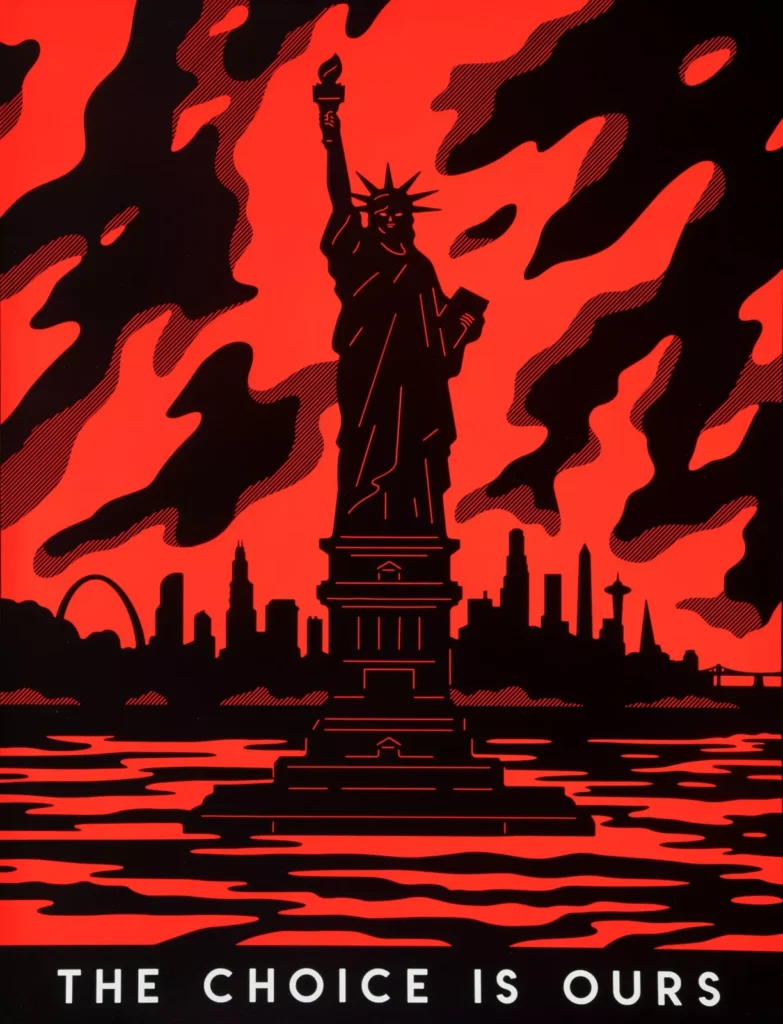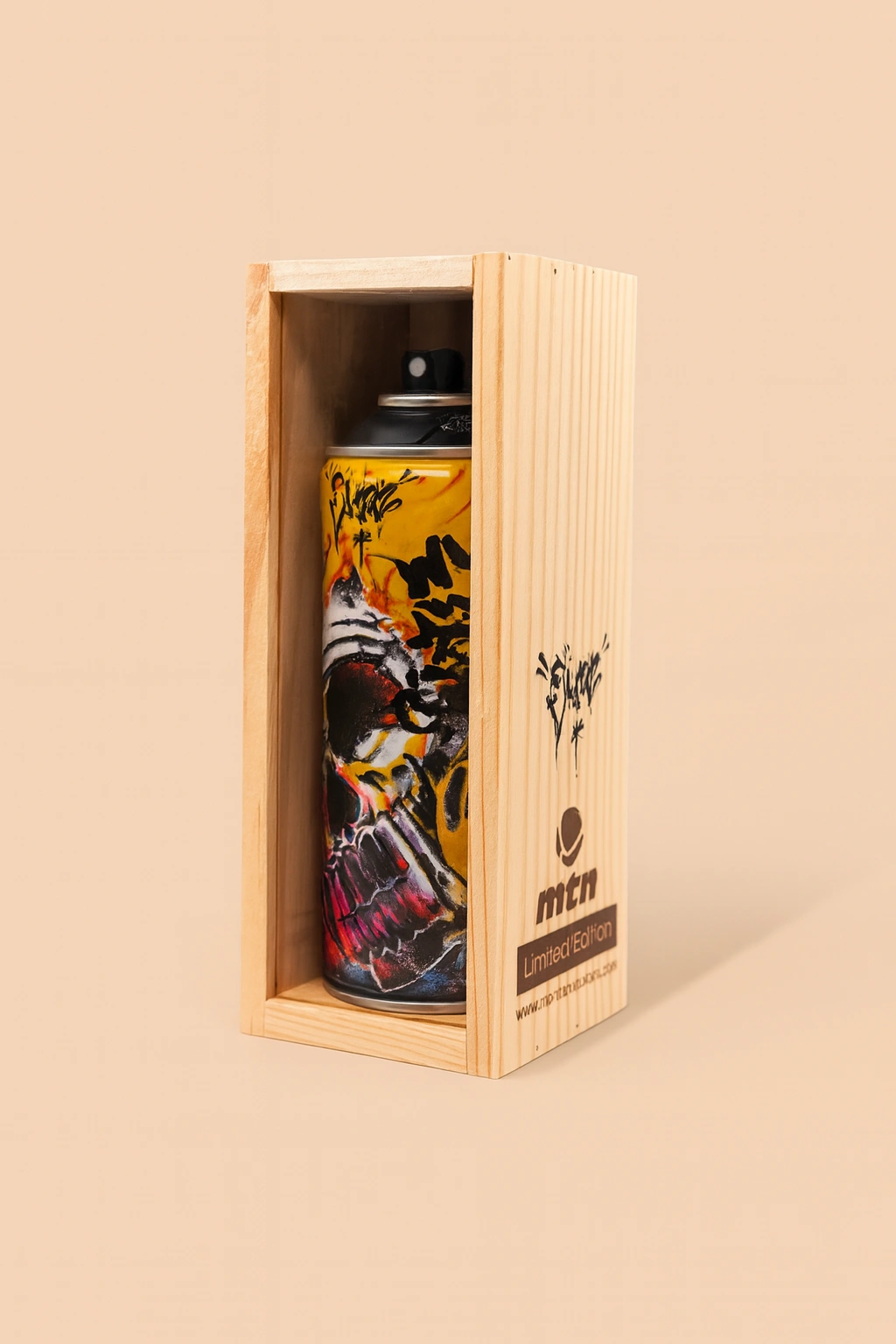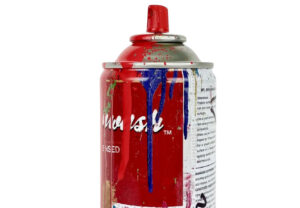In the pantheon of contemporary artists dissecting the darker sides of human nature, few are as uncompromising as Cleon Peterson. His stark, graphic compositions — brimming with raw violence and social commentary — are not just art objects but psychological mirrors, confronting viewers with the primal instincts society often tries to repress. Nowhere is this more strikingly illustrated than in his 2020 series, The Choice Is Ours.
Cleon Peterson: An Artist Shaped by Chaos
Born in Seattle in 1973, Peterson’s biography reads almost like a cautionary tale of urban America. His early years were marked by drug addiction, homelessness, and incarceration. But out of that chaos emerged an artist deeply attuned to cycles of violence and oppression — both personal and societal.
Educated at Art Center College of Design in Pasadena, California, Peterson initially moved through the commercial art world, even working with Shepard Fairey. However, he soon found his own distinct voice: a style that distilled violence into bold, monochromatic forms reminiscent of ancient Greco-Roman friezes and Soviet propaganda posters.
His large-scale murals and paintings operate at the intersection of myth, allegory, and contemporary reality. They do not merely depict violence as spectacle but interrogate its sources and its place in the human psyche.
The Language of Violence: Historical and Aesthetic Roots
Peterson’s artistic vocabulary is rooted in a lineage of artists who use simplified forms to comment on social structures — from Picasso’s Guernica to Käthe Kollwitz’s anti-war lithographs. But whereas these artists often left some room for hope or empathy, Peterson’s world is stripped of sentimentality. His figures are caught in endless loops of conflict, their identities reduced to silhouettes in black and white.
This approach draws from aesthetic traditions as varied as ancient Greek pottery (black-figure and red-figure styles), medieval woodcuts, and mid-century modernist design. In particular, his work recalls the totalitarian aesthetics of propaganda art — designed to deliver a single, potent message instantly.
In Peterson’s universe, there are no heroes. Every figure, whether aggressor or victim, is implicated in a broader narrative of systemic brutality. These figures do not merely represent individuals but archetypes, acting out a choreography of violence that transcends time and place.
The Choice Is Ours (2020): A Pandemic-Era Lament
Created in 2020, The Choice Is Ours arrived during one of the most tumultuous years in recent memory. Amid a global pandemic, racial justice protests, and deepening political divides, humanity’s fragility was on full display. Peterson responded to this climate not with gentle reflection but with a clarion call: an indictment of collective moral and ethical failures.
In this series, Peterson’s visual lexicon remains consistent — stark contrasts, muscular bodies, dynamic, chaotic compositions. Yet there is an added layer of urgency. The title itself is a provocation: The Choice Is Ours. It suggests agency, but the paintings seem to ask whether we are truly capable of choosing compassion over cruelty, cooperation over domination.
Visual Analysis: Order and Chaos
Peterson’s compositions resemble choreographed dances of destruction. Figures are arranged in interlocking patterns, creating a hypnotic rhythm. Arms, legs, and weapons flow across the canvas like a violent ballet, each figure locked in perpetual struggle.
In The Choice Is Ours, the scenes are often framed as all-encompassing fields of action, with no clear focal point. This compositional strategy denies the viewer the comfort of narrative resolution or moral clarity. There is no “main character” to root for — only an endless parade of interchangeable forms locked in cycles of aggression.
By flattening the pictorial space and eliminating background context, Peterson focuses our attention squarely on the human (or inhuman) acts themselves. The viewer is forced into the role of witness, unable to look away or contextualize the violence as “other.”
The Philosophical Underpinnings: Hobbesian Themes
Peterson’s worldview aligns closely with Thomas Hobbes’s conception of human nature as described in Leviathan (1651): life in a state of nature is “solitary, poor, nasty, brutish, and short.” In Peterson’s paintings, there is no social contract; only raw, unmediated power struggles.
The Choice Is Ours could be read as a meditation on this Hobbesian condition. The title implies freedom of will, but the artwork suggests that when stripped to our core, we often default to violence and dominance rather than altruism. This tension — between theoretical moral agency and lived violence — is at the heart of the series.
Literature and Myth: The Eternal Return of Violence
Peterson’s work, including The Choice Is Ours, can also be situated within a broader literary context. It echoes themes from Joseph Conrad’s Heart of Darkness, where civilization’s veneer is easily stripped away, revealing an undercurrent of primal brutality.
There is also a clear connection to the myth of Sisyphus, as interpreted by Albert Camus: the eternal struggle without resolution or reward. Peterson’s figures, locked in their violent cycles, evoke this same sense of absurd repetition, an endless loop of conflict in search of meaning.
Reception and Critical Debate
The Choice Is Ours was met with both acclaim and discomfort. Critics praised its raw honesty and uncompromising aesthetic clarity. Fans of Peterson’s earlier work viewed the series as a natural evolution — a deepening of his exploration into power dynamics and social decay.
However, some critics argued that the relentless focus on violence risks desensitizing viewers or, worse, aestheticizing brutality to the point where its horror is diminished. This debate is not new; similar questions have been raised about war photographers, violent cinema, and even classical battle paintings.
Yet, Peterson’s intention seems to be to force engagement rather than provide easy answers. He invites viewers to confront rather than escape — a risky but potent strategy in a media landscape saturated with sanitized violence.
The Pandemic and the Choice
The context of 2020 cannot be understated. The COVID-19 pandemic exposed structural inequalities and societal fractures. The simultaneous rise of social justice movements like Black Lives Matter foregrounded systemic violence that had long been ignored or minimized.
In this climate, The Choice Is Ours reads as both accusation and plea. It accuses society of failing to choose solidarity over selfishness, equity over power. Simultaneously, it pleads for a reckoning — a recognition that true agency requires collective moral courage.
Cleon Peterson and Contemporary Trends
Peterson’s work aligns with recent trends in contemporary art that emphasize social critique and moral engagement. Artists like Kara Walker, who explores racial violence and historical trauma through silhouette installations, and Ai Weiwei, who critiques state power, also use stark imagery to unsettle and provoke.
However, Peterson diverges in his refusal to offer redemptive narratives. Where some contemporary artists create space for healing or reconciliation, Peterson offers none. In The Choice Is Ours, even the possibility of change feels tenuous, almost mocking.
Legacy and Influence
As Peterson’s career progresses, The Choice Is Ours stands as a critical marker — a point where his long-explored themes crystallized under the pressure of global crisis.
Beyond its immediate reception, the series will likely be studied as an emblematic artifact of early 2020s anxieties: a record of a moment when humanity was forced to confront its own fragility and moral contradictions.
Moreover, the work’s graphic style has influenced street artists, graphic novelists, and fashion designers alike, who borrow Peterson’s minimal yet impactful visual language to comment on everything from politics to consumer culture.
A Mirror and a Warning
The Choice Is Ours forces us to ask whether we are, in fact, capable of making different choices — of breaking out of cycles of violence and domination. Peterson doesn’t offer easy solutions or catharsis. Instead, he compels us to stare into the mirror he holds up and decide: do we have the courage to choose another path, or are we forever condemned to repeat the same brutal dance?
In confronting us with these questions, Cleon Peterson asserts the true power of art — not as decoration or commodity, but as a vessel for moral and existential inquiry. In an era defined by crises both visible and invisible, The Choice Is Oursremains a resonant, haunting testament to the age-old struggle between darkness and the faintest possibility of light.
No comments yet.








